Control over the famous “Lavra” in Kyiv means not only religious, but also political influence. Now the state is flexing its muscles to push back traditionally pro-Russian forces.
For the East Slavic Orthodoxy, the Kiev Cave Monastery has the highest religious importance.
The Cave Monastery in the Ukrainian capital of Kyiv is the cradle of East Slavic orthodoxy. Whoever controls it not only has religious legitimacy, but also political power. Until the end of the year, the Ukrainian Orthodox Church of the Moscow Patriarchate, which had been close to the Kremlin for decades, was the lady of the house in the monastery, founded in 1051 and recognized as a UNESCO World Heritage Site.
But on Saturday, Metropolitan Epifani – the head of a rival church – read the Orthodox Christmas Day mass here. He is the first representative of the state-affiliated Orthodox Church of Ukraine to receive this honor at the magnificent Uspensky Cathedral. The service, held under strict security measures, shows Kiev’s will to curb the influence of pro-Russian forces in the Pechersk Lavra. This is all the more significant as the Kremlin and its ally Moscow Patriarchate declared the attack on Ukraine a holy war to collect the “historically Russian territories” reaching as far as Kyiv.
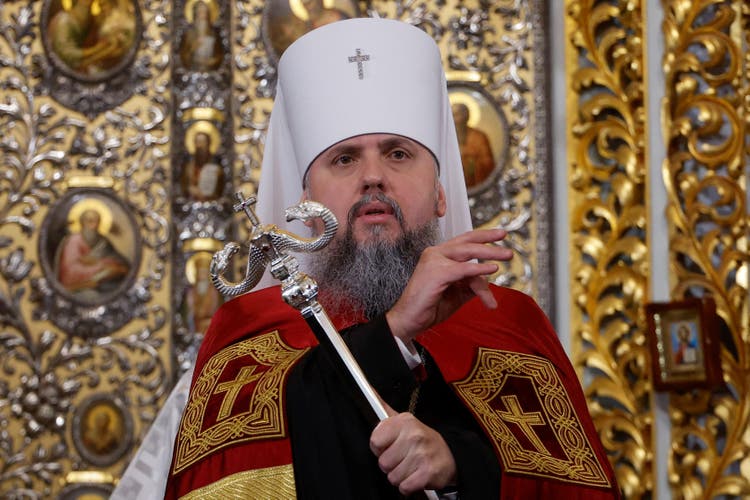
Metropolitan Epifani celebrates Christmas Mass in Uspensky Cathedral for the first time.
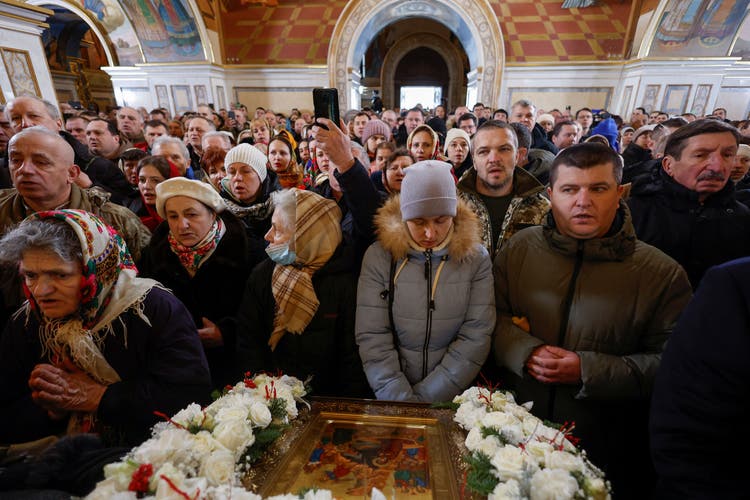
Hundreds of believers gathered on the grounds of the cave monastery for prayer.
The Ministry of Culture therefore terminated the lease agreement for two central churches on December 31, on the grounds that it could no longer tolerate «the presence of structures of the Moscow Patriarchate on its territory». At the same time, it denied the previous Abbot Pavel and his followers access to part of the monastery complex known as the “Lawra”. “It’s all our territory, but they won’t let us in,” complains the abbot, speaking of a “policy of church looting.”
church and politics
However, the claim of the abbot, who was decorated by Putin and acted autocratically for many years, is only partially justified. The ownership structures of the 23-hectare area with its 144 buildings are complicated as a result of the Soviet past: Since the atheistic state did not tolerate any religious centers, it closed the monastery and declared the site a historical-cultural protected area in 1961, a kind of open-air museum.
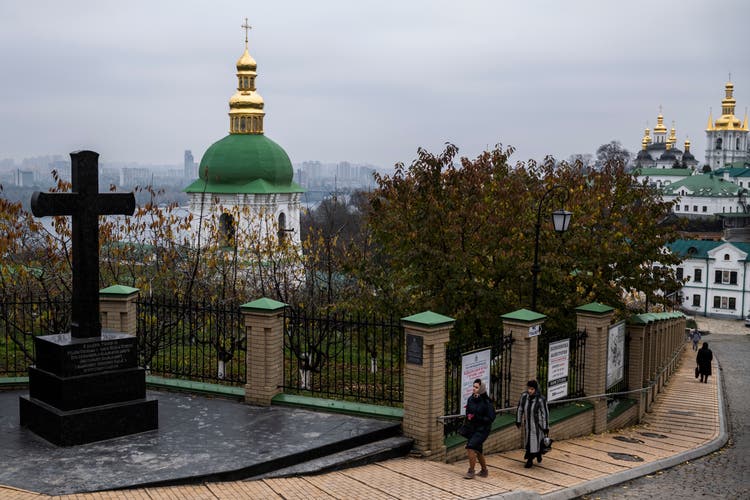
View from the upper to the lower «lavra»: The property structures in the Kiev Cave Monastery are complicated.
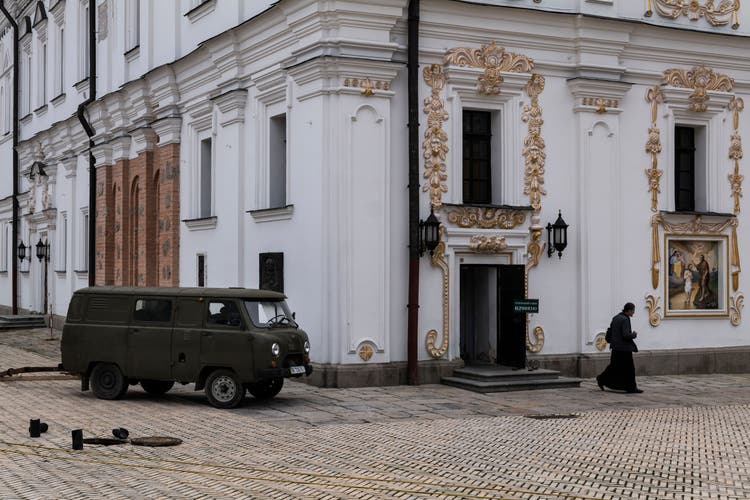
The churches in the upper «lawra» belong to the state.
Since 1988 the cave monastery has been used for religious purposes again. At that time, the state gave it back to the Russian Orthodox Church – but only partially. She became the owner of the lower «lawra», where the actual monastery and the world-famous catacombs full of mummified monks are located. The upper lavra, separated by a wall, remained with the state. However, the church leased various objects.
With independence in 1991, Ukraine’s religious landscape splintered. In addition to the Ukrainian Orthodox Church of the Moscow Patriarchate, nationally oriented currents formed. The most important united in 2018 on the initiative of then President Petro Poroshenko to form the Orthodox Church of Ukraine (OKU). Shortly thereafter, the Ecumenical Patriarch of Constantinople also recognized this. The supporters of the Moscow Patriarchate, on the other hand, consider them illegitimate.
Conversely, the OKU criticized its competitor’s monopoly on the use of the cave monastery. However, the Ukrainian Orthodox Church of the Moscow Patriarchate had secured this politically, especially under the pro-Russian President Viktor Yanukovych. Abbot Pavel was there too member of his party. His church’s exclusive presence in the ‘Lavra’ was already a source of conflict during the 2014 Maidan revolution, when religious and political leaders struggled to stop an angry mob from throwing out the ‘Moscow priests’. At the time, you warned that Russia should not be given an excuse to intervene.
patriarchs and secret service agents
With the invasion of February 24, 2022, this argument was dismissed, and since then the Ukrainian Orthodox Church, which is close to the Kremlin, has been under even more general suspicion. In May, she therefore separated from the Moscow Patriarch Kirill without declaring her full independence – and without him recognizing this step.
The church not only threatens to be torn apart by its inner contradictions and different currents, but also gets caught between the fronts in the war. While Metropolitan Onufri has clearly criticized Russia’s war of aggression, many religious leaders discredited by their Kremlin ties remain in office. Among them is Abbot Pawel, who according to media reports let the believers continue to pray for Kirill in the services.
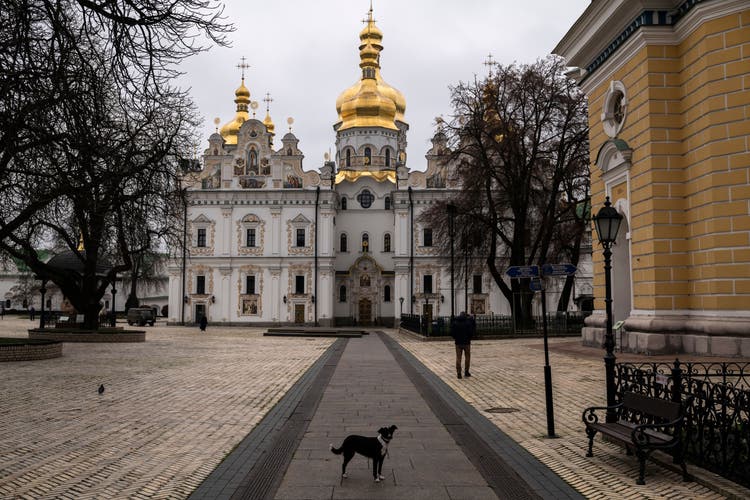
The most important church of the Cave Monastery is the Uspensky Cathedral. The state terminated the lease of the Ukrainian Orthodox Church, which is close to the Kremlin, at the end of 2022.
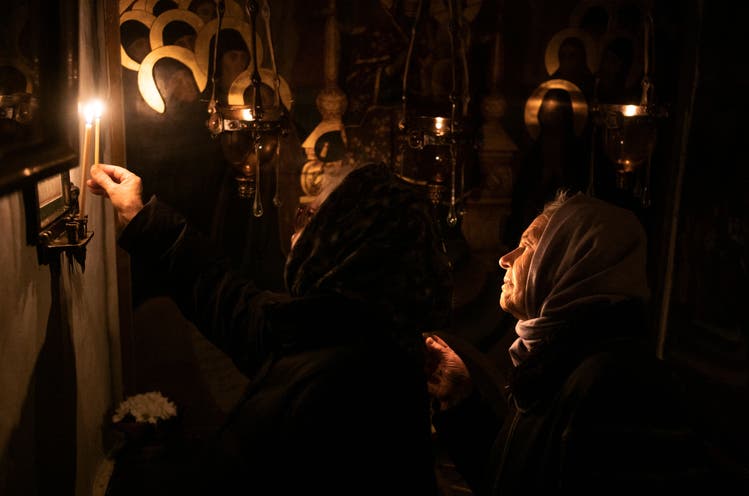
The majority of Ukrainians profess the Orthodox faith.
The patriotically oriented Orthodox Church of Ukraine uses this situation to more aggressively defend its claim to the use of the cave monastery. Unlike his predecessor, President Volodymyr Zelensky showed little interest in the polarizing issue for a long time. Since the summer, however, those forces that classify the Ukrainian Orthodox Church as a security risk have prevailed in his environment and at the renewed head of the SBU secret service.
The SBU therefore regularly searches church institutions, including the cave monastery. The security officers seized pro-Russian propaganda material and large amounts of cash of unknown origin. Finally, in mid-November, a video of believers singing a song about the “awakening of Mother Russia” caused huge public outrage.
Since then, events have unfolded: On December 1, President Zelenskiy declared that the Security Council wanted parliament a ban on activities of the Ukrainian Orthodox Church of the Moscow Patriarchate. A few days later, two parties, including that of the President, introduced a bill to confiscate the property. Selensky issued sanctions against Abbot Pavel. Shortly before the end of the year, the Ministry of Culture finally decided not to extend the lease.
Kyiv and Moscow
The fact that the Orthodox Church of Ukraine was able to hold the service in the Uspenski Cathedral at Christmas shows the determination of the state to break the monopoly of the Ukrainian Orthodox Church of the Moscow Patriarchate. This considers the step to be illegal. She relies on a law that prohibits changing long-term leases in time of war. However, there can be no question of being expelled from the «lawra», because the church continues to control the lower part of the monastery complex on extremely favorable terms.
The OKU, on the other hand, makes no secret of the fact that it regards the presence of the competing church as temporary. “In the long term there will only be one monastery under our leadership, but its doors will be open to everyone,” Archbishop Eustrati said recently. His church also hopes to accelerate the influx of believers, which has been rather sluggish since 2018.
For her competitor, however, the situation is becoming increasingly precarious across the country. As a result of the war, it lost numerous communities in the occupied territories in the east, while many of its institutions were damaged, including the Svyatohirsk «Lavra».
There is also the threat of a ban, even if it remains unclear to what extent the steps taken are compatible with the principles of the rule of law and religious freedom. Most recently, the constitutional court decided at the end of December that the church had to rename itself because it was being controlled directly from the “aggressor state Russia” – a statement that hardly does justice to the heterogeneity of this institution. Its new name would then be the Russian Orthodox Church in Ukraine.
